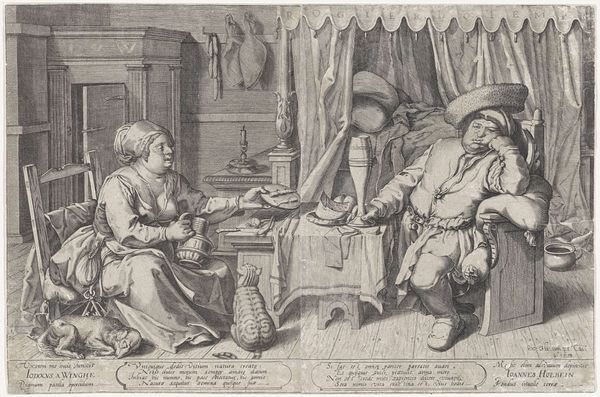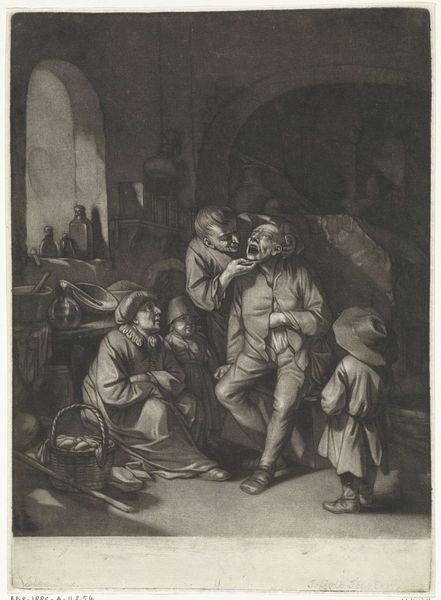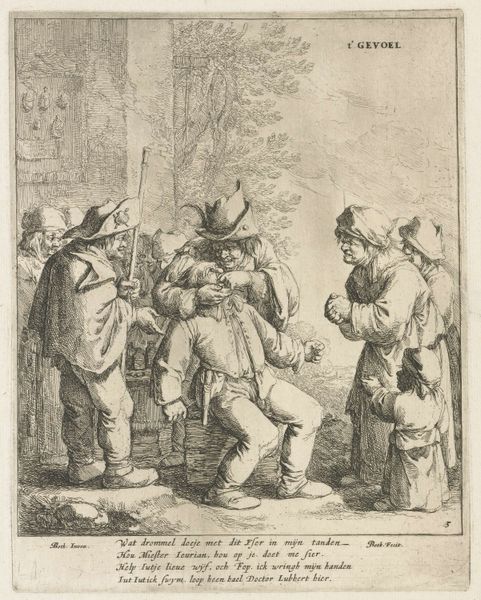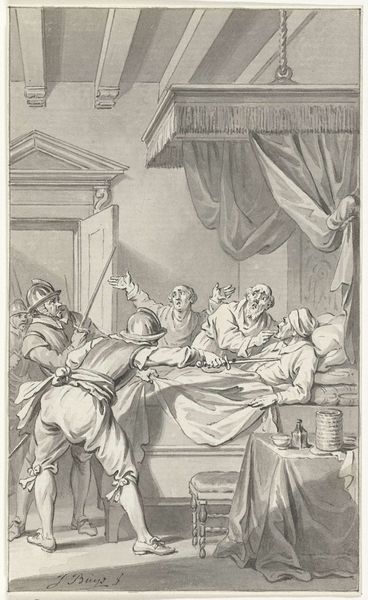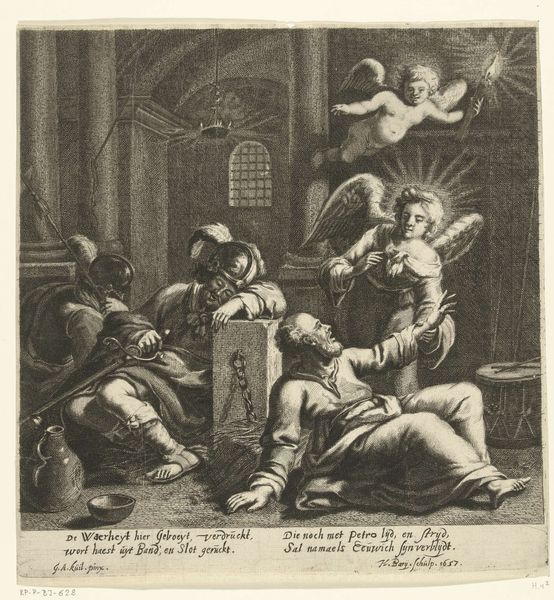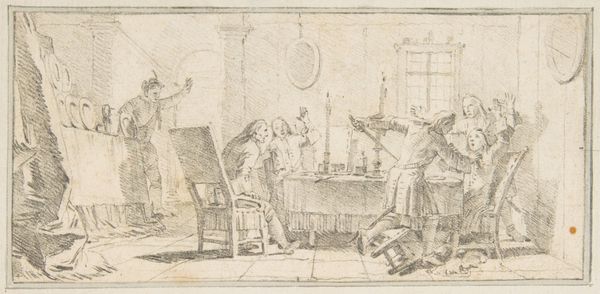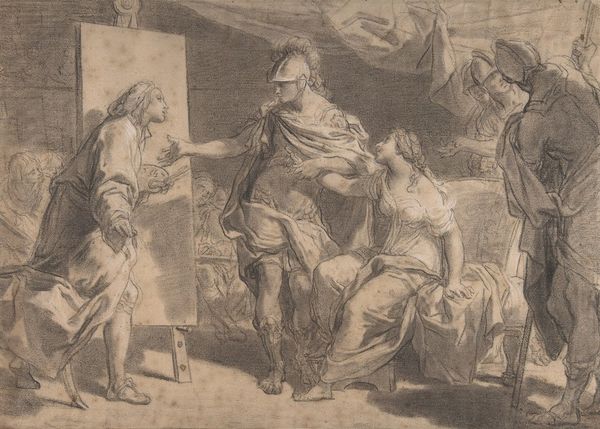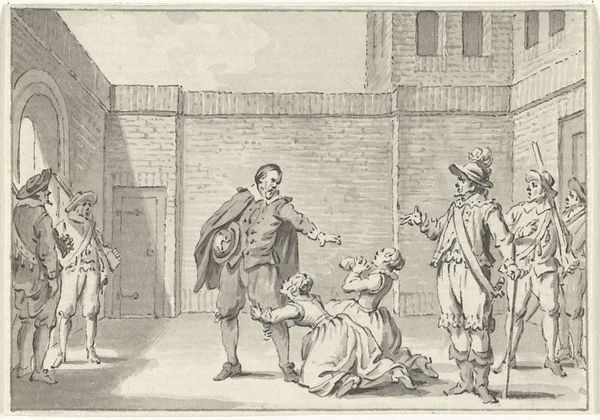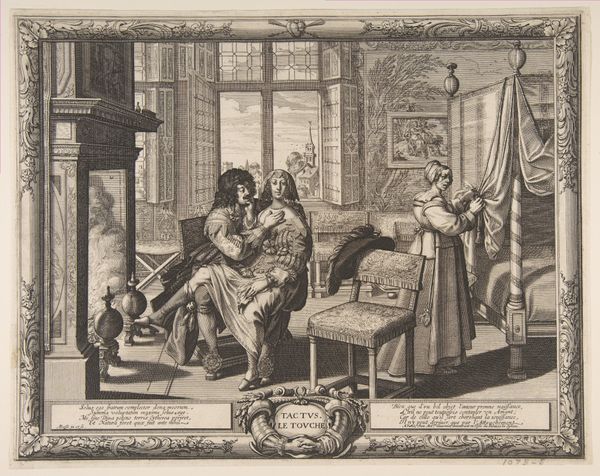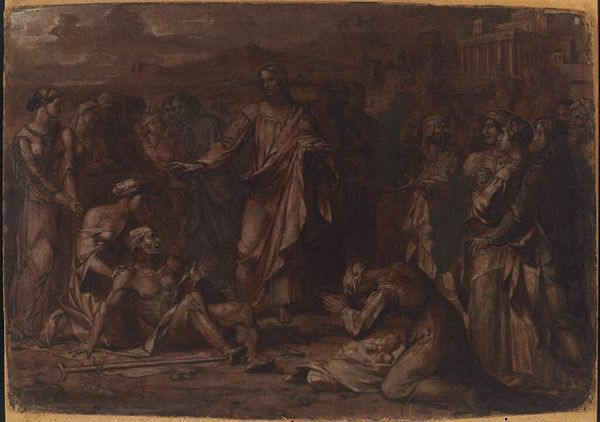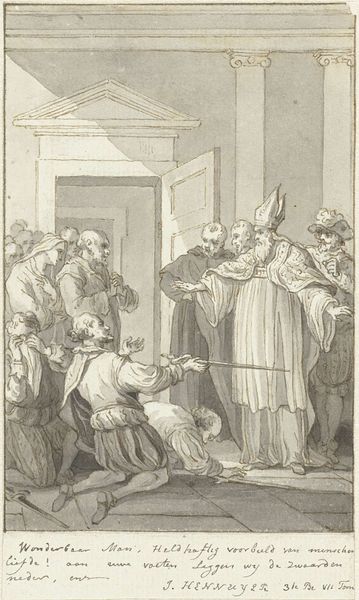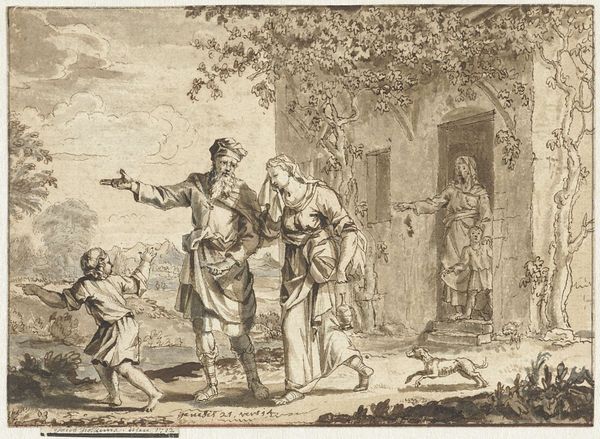
painting, oil-paint
#
portrait
#
figurative
#
baroque
#
painting
#
oil-paint
#
figuration
#
genre-painting
Copyright: Public Domain: Artvee
Curator: Today we're looking at Aelbert Cuyp’s “Tasting the Wine,” an oil painting from around 1640 to 1650. Editor: It strikes me as darkly comic. The composition is split; one figure exits to the sunlit exterior while the other reclines, nearly lost to shadow. There's a palpable tension between the two, light and dark. Curator: It’s fascinating how Cuyp situates this scene. Wine tasting, consumption—it was increasingly part of Dutch culture during the Golden Age. Tavern scenes were a popular genre but they're never merely celebrations, are they? They often imply something about social roles and tensions. Editor: Precisely. And here, the contrast is stark. We see someone departing for labor, drink in hand. Is this an offering, or a flaunting? Who benefits from the work, and who from the leisure? And why is one figure literally leaning on what seems to be a wine barrel, rendered immobile, and possibly incapacitated? Curator: Absolutely. Cuyp was working in a period defined by burgeoning mercantile activity but also dramatic disparities in wealth. The way he depicts the contrast between light and dark certainly amplifies those tensions. The darkened space feels like a commentary on what these sorts of indulgences hide, who or what suffers in service of them. Editor: Look at the dog too, asleep at the reclining man's feet. Another emblem of dependence, perhaps? Wine, for many at the time, also came with certain connotations of social class. Cuyp's treatment feels subversive, almost daring, in how he connects individual action to larger political structures. Curator: Cuyp often captured daily Dutch life, and these glimpses weren’t always rosy. We also have to consider Cuyp’s broader biography. It is vital to acknowledge that the wealth Cuyp depicted also derived from colonial exploitation and enslavement in Dutch colonies. How are we reckoning with those legacies here in Cuyp's handling of wine as a cultural artifact? Editor: You're right, of course. To only see a simple tavern scene misses the critical context that shapes this moment. This painting makes me reconsider the very act of 'tasting the wine', as it then—and now—carries multiple, complicated meanings and legacies. Curator: Indeed. A closer examination reveals not just social commentary, but uncomfortable truths about consumption, labor, and power, truths that continue to echo through time.
Comments
No comments
Be the first to comment and join the conversation on the ultimate creative platform.
